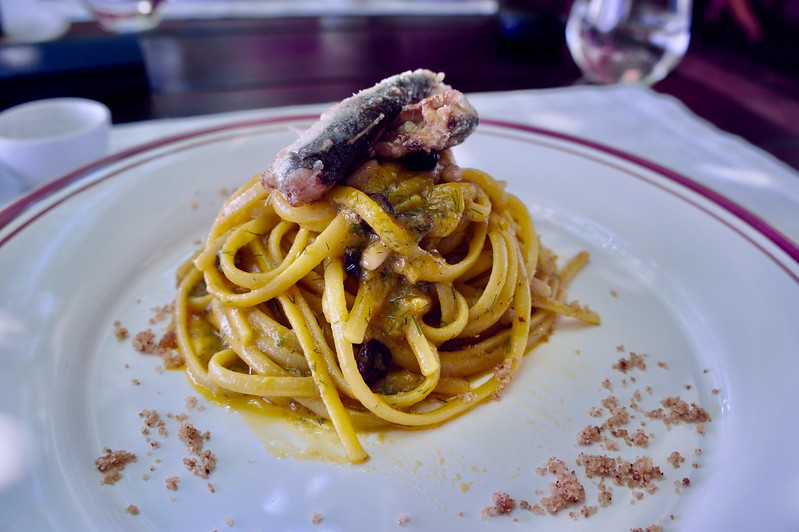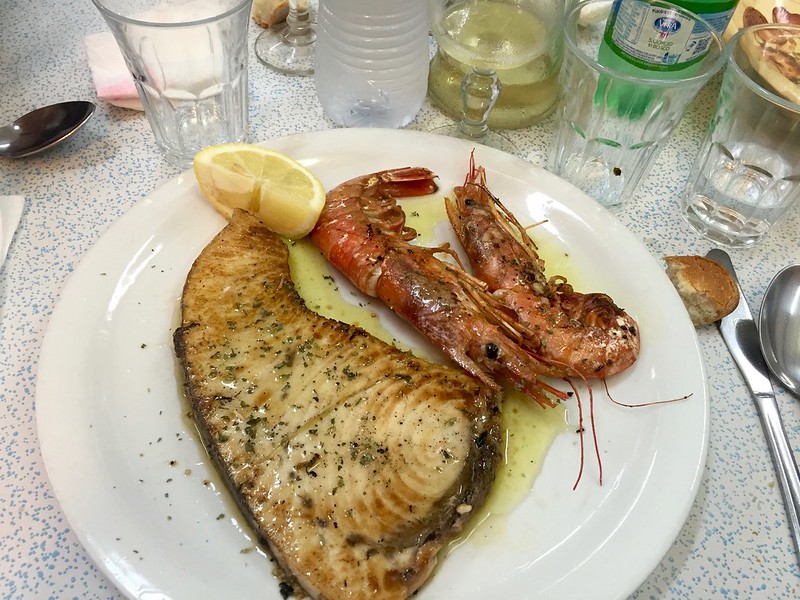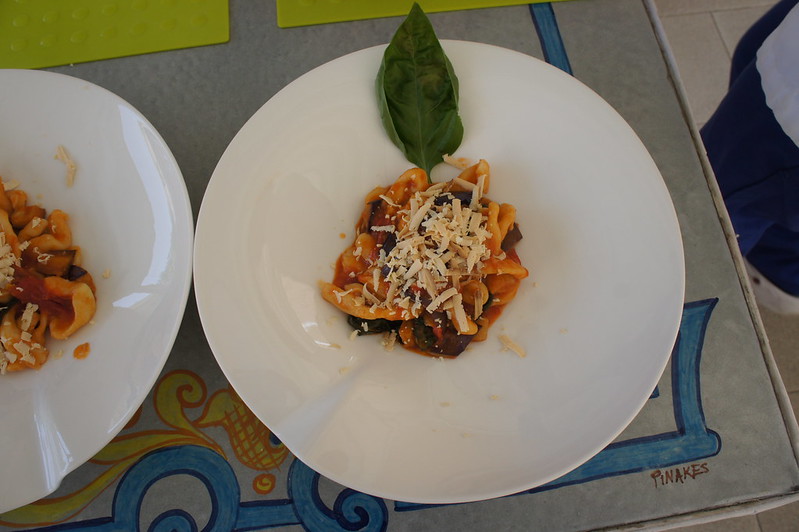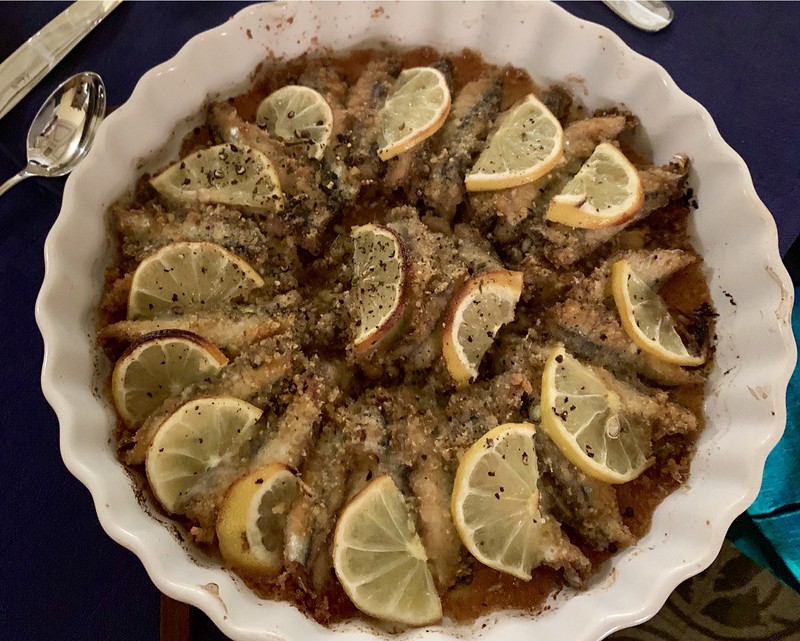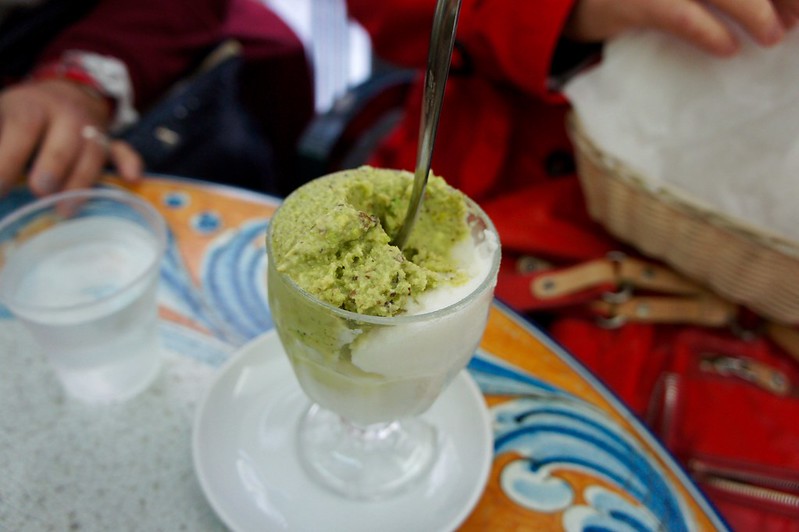The top Sicilian dishes to try
The island of Sicily is one of the most unique and fascinating regions in Italy, a land marked by millennia of successive invasions beginning with the ancient Greeks and stretching through the Romans, Arabs, Normans, Swabians, and French and Spanish Bourbons. The result of this richly variegated history is a distinct culture and dialect and true “fusion” cuisine, with singular local dishes that are both multiethnic and deeply Sicilian. In fact, Sicily is one of our favorite culinary destinations in all of Italy. “Sicily is just an amazing place to eat,” says Brian. “I usually buy cookbooks when traveling and more or less have one from each region. I’ve got two from Sicily.”
Perhaps it is because we love Sicilian cuisine so much that the episode of “Stanley Tucci: Searching for Italy” dedicated to the island left us somewhat perplexed. Though some scenes and dishes brought waves of nostalgia from our past visits, some oversights were rather glaring—the omission of Syracuse, for example, or the “down and dirty” joints you find all over the big cities. “In Palermo, we’ve had good luck at Vecchia Trattoria da Totò (Via Coltellieri, 6). We had fried sardines, spaghetti, and as swordfish steak with grilled shrimp for €20/person. Trattoria Altri Tempi was also memorable for their fried seafood basket . The calamari come whole complete with the ink and quill!”
One the other hand, we were happy to see some of the islands quirks and highlights make the cut. We had to smile at the scene of the timballo tasting at an old aristocrat’s house [Princess Stefania di Raffadali] in Palermo, where Tucci is greeted by a white-gloved butler and served a painfully formal meal by the same white-gloved butler. “Maria and I have had a similar experience at ‘baglio’ in the area near Selinunte. It was the family home of some ‘cavalieri’ (or knight) of something.
The white-gloved butler emerged out of the olive trees to take our bags and then when it came time for dinner he was there spooning seafood cous cous (an important dish they didn’t touch on in the show). It’s extremely Old World and overly formal, but you still find this kind of thing in Sicilia,” says Brian. “The butler scenes really brought back memories,” adds Maria Gabriella. “Stanley looked uncomfortable.”
Another scene we particularly connected with during the episode was when he visits the Occhipinti winery to meet Arianna Occhipinti, one of the pioneers of Italy’s wave of women vintners who we mentioned in our Women in Wine post a few years back. “I think the woman-owned vineyard was a great stop and it was good to talk about the impact of immigrants on the island and how the Sicilians are helping them,” notes Maria Gabriella “In terms of Sicilian food however, Tucci missed a lot.”
Regardless of whether you loved, hated, or, like us, were on the fence about this final leg of Tucci’s epicurean journey (we’ve covered the Rome, Bologna, and Milan episodes and will soon be taking a deep dive into the Amalfi Coast and Tuscany itineraries), this dish-by-dish trip across the island did touch on some favorite classics that are worth sampling when visiting Sicily. Here’s a handy overview of our picks to keep at hand for your next Sicilian adventure:
Spaghetti with bottarga – Originating from the Arabic word “battarikh”, bottarga is an ancient specialty that was virtually unknown outside of Sicily and Sardinia until recently. This salted and cured fish roe was a way for local fishermen to preserve the remnants of their catch that would otherwise be discarded. Its umami-rich flavor and laborious preservation, however, elevated bottarga from a “poor man’s” dish to a gourmet delicacy.
Bottarga can be made from a variety of species ranging from grey mullet to swordfish, but in Sicily it is usually made with tuna roe, prized for its deep red color, decisive flavor, and solid texture. Sicilian tuna bottarga requires a longer processing time (up to thirty days) that includes repeated rinsings and salt baths to clean the roe and a drying period under heavy presses that creates a square, brick-like slab.
The dried and intensely flavoured slabs of bottarga are then grated or shaved over steaming plates of spaghetti (or bruschetta, risotto, or even raw artichoke salad) to lend a satisfying and complex taste of the sea.
Spaghetti with sarde – This simple pasta dish is a favorite of Brian’s and is ubiquitous across Sicily. Another example of a mix of cultural influences, this classic “primo” combines the saffron, pine nuts, and raisins commonly found in Middle Eastern dishes with wild fennel native to Sicily and fresh sardines plucked from sea just off the island’s shores. Deceivingly simple to prepare, this dish rests on the quality of its ingredients and embodies Sicily’s patchwork of cultures and cuisines.
Pasta alla norma – Perhaps the most famous Sicilian pasta dish, pasta alla norma is another menu mainstay that can be found virtually anywhere on the island, though it is said to have originating in Catania. According to popular legend, this dish commemorates Vincenzo Bellini’s landmark opera “Norma” and it showcases the wealth of local produce that has earned Sicily the nickname the “God’s kitchen”. This rich tomato sauce is studded with creamy chunks of fried eggplant and topped with shaved “ricotta salata” (aged ricotta), but this is where the similarity from one version to another ends. Each family and restaurant has its own twist on this staple, including variations with chili pepper flakes, capers, or wine.
Sarde a beccafico – “We made this at a cooking class in Syracuse, which included a visit to the local market for food shopping and then lunch preparation,” says Brian.
This traditional dish turns the spotlight on one of Sicily’s most prized local delicacies: sardines. Here they are butterflied and then stuffed with raisins, pine nuts, breadcrumbs, and herbs before being baked with bay leaves until crispy and golden. The dish is actually named after a local songbird, the beccafico, which feeds on wild figs and was once hunted by the island’s aristocracy.
Local fishermen adapted the recipe, replacing the tiny birds with less expensive and more accessible sardines, and soon the fish version became the most beloved. Like many dishes that can trace their roots to “cucina povera”, or poorman’s cuisine, sarde beccafico has as many versions as there are families. A common recipe calls for the juice of Sicilian oranges to dampen the breadcrumbs, creating a delightful “agrodolce” (sweet and sour) flavor that is common in many traditional island dishes. “In addition to beccafico, I also make a really tasty tortino di sarde,” says Brian.
This recipe uses essentially the same ingredients as sarde a beccafico but instead of stuffing each fish individually, layers them with the flavored breadcrumbs to create a timballo-like baked dish.
Minestra di tenerumi (also called minestra di tinnirumi) – As Brian says, “this is the only time I’ve seen where it’s ok to break the spaghetti. This summer soup is the result of the ubiquitous kitchen garden in Sicily, where every home has at least a handkerchief of yard (or row of pots on the balcony) planted with the basic summer vegetables and herbs. Minestra di tenerumi is made with the ripest tomatoes, fresh basil leaves, and tenerumi, or the stems, leaves, and tendrils of a type of heirloom island squash that zigzags its way along the ground so much that locals call it “zucca serpente”, or snake squash. Spaghetti is broken into shorter pieces and thrown in to thicken this homey potage that is a family favorite across the island.
Tunnina ca’ cipuddata – This Sicilian classic pairs fresh, local tuna with marinated onions and “really shows off the ‘agrodolce’ (sweet and sour) concept that is much more pervasive in Sicily than it is elsewhere,” says Brian. Marinating vegetables in sugar and vinegar is another ancient import from the Middle East, where preserving fresh produce in the warm climate was always a challenge, and the strong element of “agrodolce” in Sicilian cooking traces its roots back to the Arab invaders.
Scaccia Ragusana – Maria Gabriella describes this speciality from Ragusa “like a lasagne bread,” which essentially combines two crowd-pleasers into a single irresistible dish that they learned to make during a past trip to Sicily.
This stuffed flat bread is made by folding a thin layer of dough three or four times around a variety of different ingredients (the most common include mozzarella and tomato sauce, eggplant and tomato sauce, ricotta and onion, or tomato and onion.
Other island specialties to try include arancine, panelle, granita, and all manner of traditional pastries.
